
18 Best Small Pet Birds for Beginners that Talk (with pictures)
What Are Small Birds That Can Talk and Why Do They Mimic Human Speech?
Small birds that can talk are species like Budgerigars, African Grey Parrots, and Cockatiels that mimic sounds, including human speech. This isn’t actual conversation—birds don’t “talk” like we do. Instead, they’re experts at repeating sounds they hear around them.
But why do they mimic human speech? In the wild, birds use calls to communicate within their flock. Pet birds mimic these sounds, but with humans instead of other birds. It’s their way of connecting with you, their human family. Whether they’re repeating your greetings or mimicking a phone ringtone, it’s all about social interaction.
So, while they don’t fully understand the words, their mimicry is a learned behavior based on repetition and environmental cues. It’s all about communication, whether with their fellow birds or with you.
Understanding the Science Behind Talking Birds
How Do Birds Learn to Talk and What Makes Them Capable of Mimicking Sounds?
Talking birds don’t have vocal cords like humans. Instead, they have something called a syrinx—a unique organ at the base of their trachea that allows them to produce a wide range of sounds. This gives them the ability to mimic anything from human speech to everyday noises, like a doorbell or dog barking.
Here’s how it works: Birds are social creatures, and communication is key. In the wild, birds use calls to communicate with each other. Pet birds replicate sounds in their environment, including human speech, as part of their social interaction.
They learn by repetition. The more they hear a sound or word, the more likely they are to mimic it. Birds are excellent at imitating sounds because they can hear and reproduce tones, pitches, and rhythms. This ability isn’t just limited to words—it can include any sound they come across.
So, while they don’t understand what they’re saying, birds use mimicry as a form of connection. Whether they’re repeating a word or a melody, it’s their way of engaging with you, their human companion.
Top Small Birds That Can Talk
Senegal Parrots

- Senegal Parrot
They are known for their ability to mimic human speech, and they also have a friendly and affectionate personality. They’re a bit quieter than other parrots, making them a great choice for those who want a talkative bird without the loud squawks.
How to Teach a Senegal Parrot to Talk
| Feature | Details |
|---|---|
| Size | 9-10 inches (23-25 cm) |
| Lifespan | 25-30 years |
| Speech Ability | Mimics words and phrases with clarity |
| Personality | Friendly, playful, relatively quiet |
Budgerigars (Budgies)

- Budgerigar
Budgies are one of the most popular small birds known for their ability to mimic human speech. They’re friendly, social, and can learn an impressive range of words. Budgies are perfect for first-time bird owners looking for a talkative pet.
| Feature | Details |
|---|---|
| Size | 7-8 inches (18-20 cm) |
| Lifespan | 5-10 years |
| Speech Ability | Can mimic up to 100 words |
| Personality | Playful, affectionate, social |
Cockatiel

- An elegant Cockatiel
Cockatiels are smaller parrots that can mimic sounds and basic words. While not as advanced as Budgies, their playful and affectionate nature makes them a great choice for a talking bird.
| Feature | Details |
|---|---|
| Size | 12-14 inches (30-35 cm) |
| Lifespan | 15-20 years |
| Speech Ability | Simple words and whistles |
| Personality | Affectionate, friendly, interactive |
Amazon Parrot

- Lovely Amazon
Amazon Parrots are among the best talking parrots, known for their vocal abilities. They are highly intelligent and can learn multiple words, phrases, and even songs. Their social and engaging nature makes them excellent pets for people looking for an interactive, vocal companion.
| Feature | Details |
|---|---|
| Size | 10-18 inches (25-45 cm) |
| Lifespan | 40-70 years |
| Speech Ability | Excellent mimicry, clear speech |
| Personality | Social, vocal, energetic |
Macaw Parrot

- Macaw Parrot
Macaws are large, vibrant parrots that are known for their intelligence and ability to mimic a wide range of sounds. While they can learn words, they are not as vocal as African Greys or Mynahs. However, their strong personalities and colorful appearance make them a popular choice for people looking for loud and expressive birds.
| Feature | Details |
|---|---|
| Size | 30-40 inches (76-102 cm) |
| Lifespan | 30-50 years |
| Speech Ability | Can mimic words and sounds, but less clear than African Greys |
| Personality | Loud, expressive, affectionate |
Canary

- Beautiful Canary
Canaries are small songbirds known for their beautiful singing rather than speaking. They are not capable of mimicking human speech, but their whistles and melodies make them great companions for people who appreciate musical birds.
| Feature | Details |
|---|---|
| Size | 4-5 inches (10-13 cm) |
| Lifespan | 10-15 years |
| Speech Ability | Can’t mimic speech; known for songs |
| Personality | Active, independent, musical |
Love Birds

- Love Birds
Lovebirds are small, social parrots that can pick up a few words with repetition. Their speech isn’t as clear as other species, but their charming personalities and companionship make them a great choice for bird lovers.
| Feature | Details |
|---|---|
| Size | 5-7 inches (13-18 cm) |
| Lifespan | 10-15 years |
| Speech Ability | Can mimic basic words |
| Personality | Affectionate, social, playful |
Pionus Parrot

- Blue-Headed Pionus Parrot
Pionus Parrots are medium-sized parrots known for their calm nature and relatively quiet behavior. While they aren’t the best at mimicking human speech, they are capable of learning a few words. They are more appreciated for their affectionate nature and long lifespan.
| Feature | Details |
|---|---|
| Size | 9-11 inches (23-28 cm) |
| Lifespan | 25-40 years |
| Speech Ability | Can learn a few words and phrases |
| Personality | Calm, affectionate, social |
African Grey Parrots
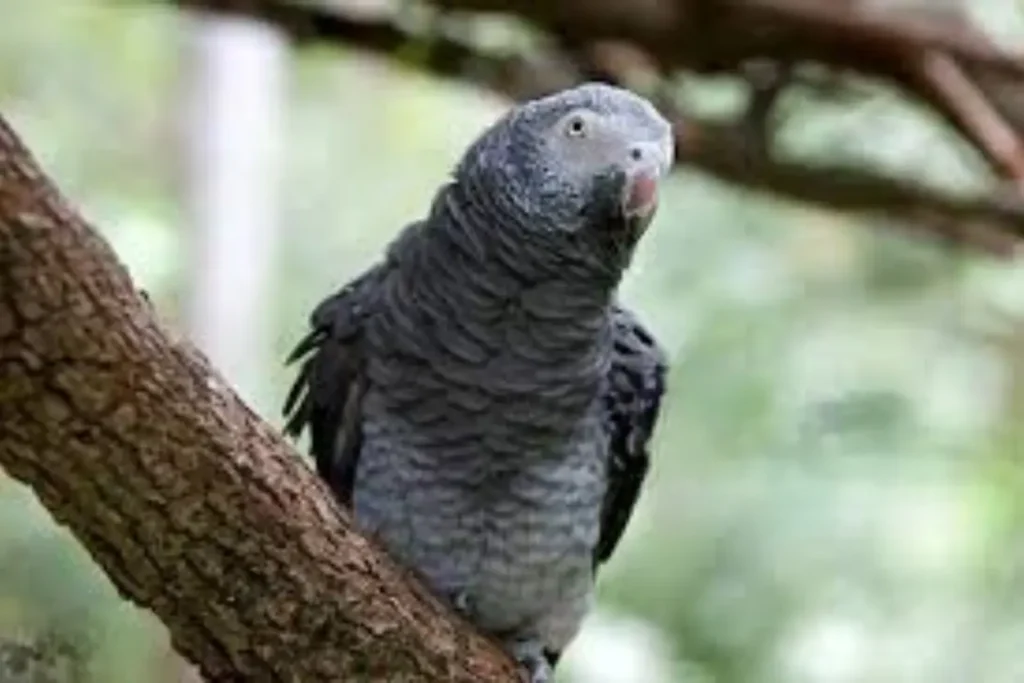
African Greys are the undisputed champions of mimicry. Known for their high intelligence, they can reproduce words and sentences with incredible accuracy. They are ideal for experienced bird owners who can provide mental stimulation.
| Feature | Details |
|---|---|
| Size | 12-13 inches (30-33 cm) |
| Lifespan | 40-60 years |
| Speech Ability | Mimics words and phrases with accuracy |
| Personality | Intelligent, social, requires stimulation |
Mynah Birds
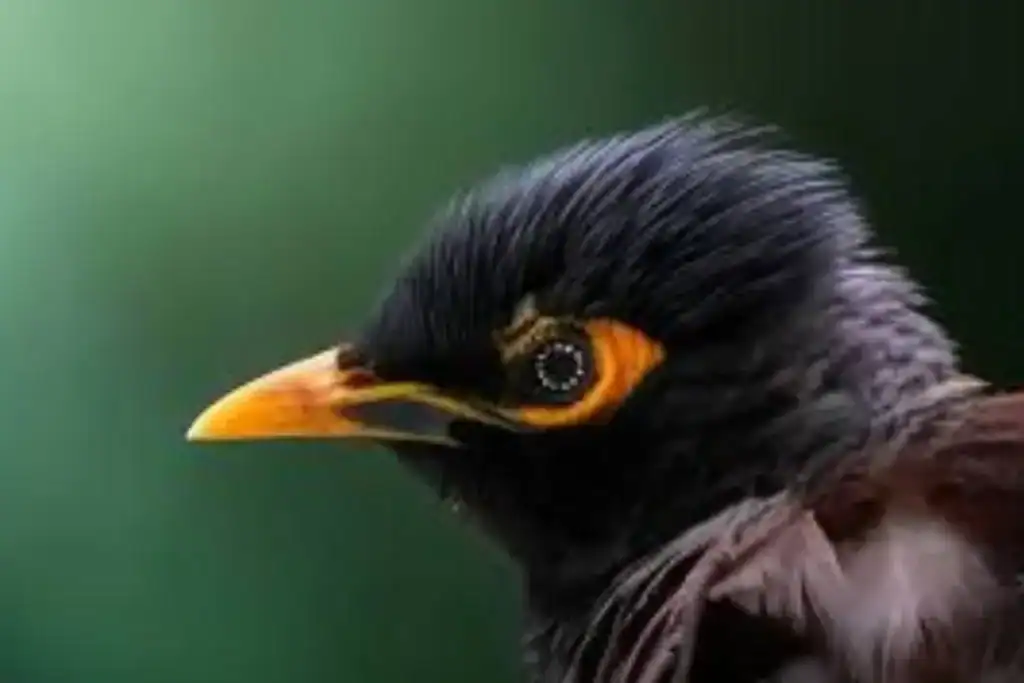
Mynah birds are exceptional talkers, often outpacing other birds in terms of how quickly they learn. Their mimicry skills are remarkable, and they can imitate both human speech and environmental sounds.
| Feature | Details |
|---|---|
| Size | 10-12 inches (25-30 cm) |
| Lifespan | 12-25 years |
| Speech Ability | Excellent mimicry, fast learners |
| Personality | Active, social, loves attention |
Quaker Parrots (Monk Parakeets)
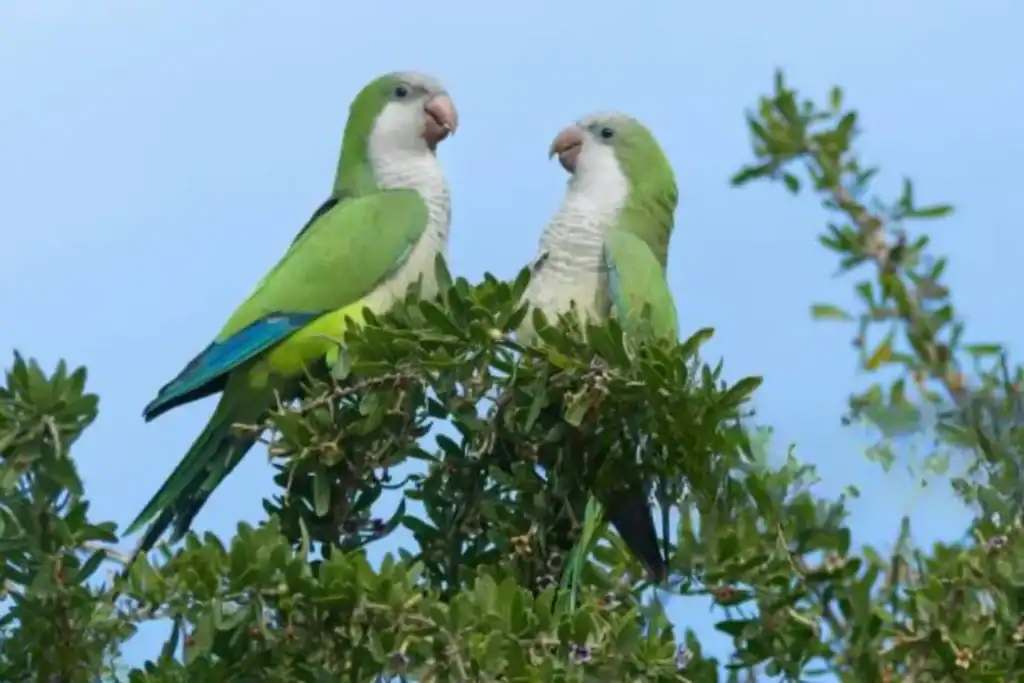
Quaker Parrots are known for their playful personalities and strong mimicry skills. They can learn a variety of words and phrases, making them excellent companions for those looking for a talkative pet bird.
| Feature | Details |
|---|---|
| Size | 10-12 inches (25-30 cm) |
| Lifespan | 20-30 years |
| Speech Ability | Learns words and phrases quickly |
| Personality | Affectionate, social, talkative |
Parrotlets
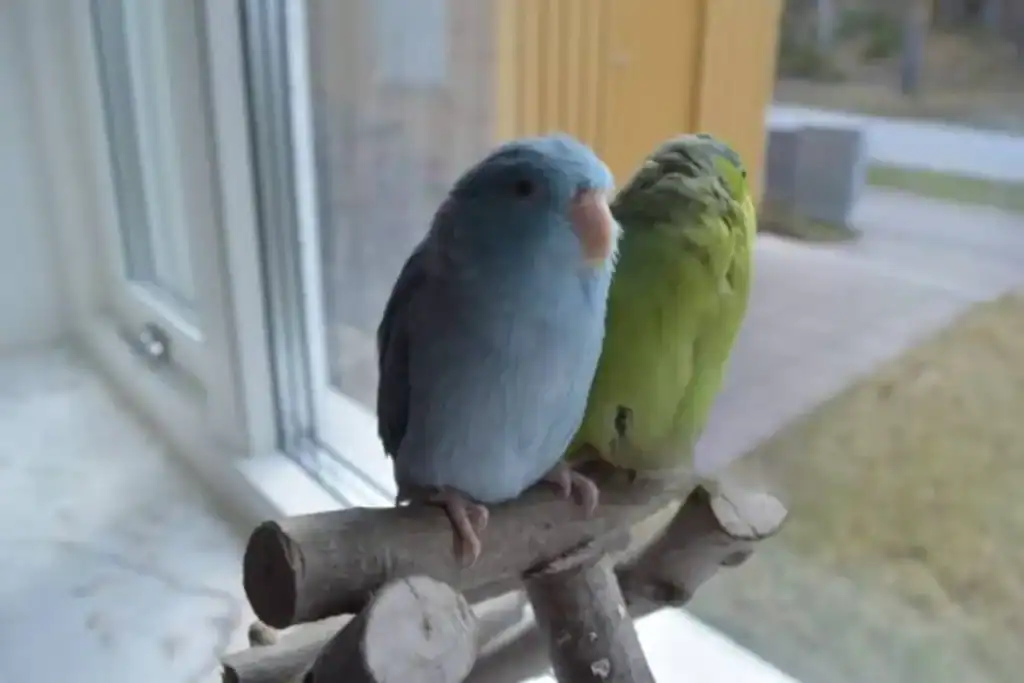
Parrotlets are tiny but mighty talkers. Though smaller than many parrots, they can still pick up a variety of words and sounds with practice. Their small size and adorable nature make them a popular choice for apartment dwellers.
| Feature | Details |
|---|---|
| Size | 4-5 inches (10-12 cm) |
| Lifespan | 15-20 years |
| Speech Ability | Can mimic basic words and phrases |
| Personality | Active, curious, affectionate |
Ropical Kingbirds

Tropical Kingbirds are small, energetic birds known for their chirps and whistles. While they aren’t as advanced in speech as parrots, they can pick up on some words and sounds with training.
| Feature | Details |
|---|---|
| Size | 9 inches (23 cm) |
| Lifespan | 7-10 years |
| Speech Ability | Basic words and sounds |
| Personality | Active, independent, curious |
Indian Ringneck Parakeets
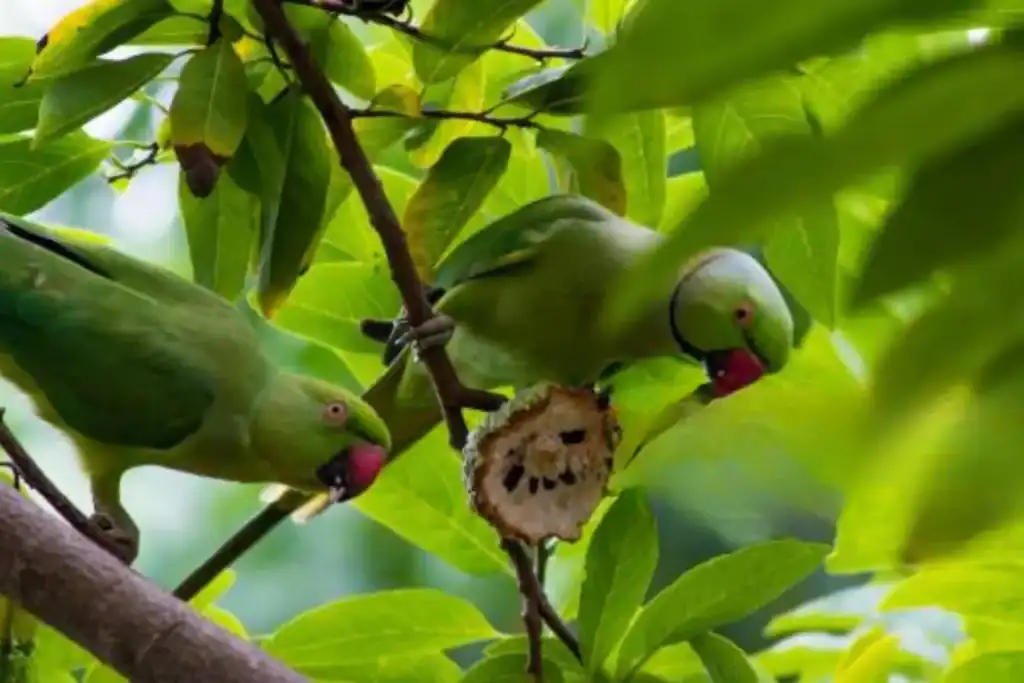
Indian Ringnecks are highly intelligent and quick learners, often becoming impressive talkers. Their ability to learn multiple words and phrases, combined with their charming personalities, makes them popular in the talking bird category.
| Feature | Details |
|---|---|
| Size | 16-17 inches (40-43 cm) |
| Lifespan | 20-30 years |
| Speech Ability | Excellent mimicry, learns phrases quickly |
| Personality | Intelligent, social, active |
Caiques

Caiques, though not as well-known as some other parrots, are extremely playful and can mimic human speech. Their bubbly and interactive nature makes them an engaging companion.
| Feature | Details |
|---|---|
| Size | 9-10 inches (23-25 cm) |
| Lifespan | 30-40 years |
| Speech Ability | Learns basic words and phrases |
| Personality | Fun-loving, playful, social |
Bourke’s Parakeets

Bourke’s Parakeets are gentle and quiet birds that can learn to mimic speech. Their sweet, calm nature and ability to learn basic words make them an excellent choice for those seeking a quieter but talkative bird.
| Feature | Details |
|---|---|
| Size | 7-8 inches (18-20 cm) |
| Lifespan | 10-15 years |
| Speech Ability | Simple words and phrases |
| Personality | Calm, affectionate, friendly |
Training Your Small Bird to Talk
How to Train Small Birds to Talk: Effective Techniques and Best Practices
Training a bird to talk is about patience, consistency, and the right environment. Here’s how to set your bird up for success:
- Repetition: Repetition is key. Birds learn words by hearing them repeatedly. Use the same phrases regularly, such as “Hello” or “Good bird.” The more a bird hears a word, the more likely it will try to mimic it.
- Positive Reinforcement: Reward your bird when it mimics a word, even if it’s not perfect. Treats, praise, or gentle head scratches work wonders. Positive reinforcement helps create a strong connection between the behavior and the reward, encouraging more mimicry.
- Social Interaction: Birds are social creatures, so talking to your bird frequently helps. The more they interact with you, the more they’ll pick up your words and sounds. Mimic their sounds too, and they may start trying to copy you.
- Use of Sounds & Visual Cues: Sometimes, adding a visual cue or associating a word with an action helps. For example, saying “Bye-bye” while waving can trigger the bird to repeat it during a routine.
Timeline for Learning
So, how long does it take for a small bird to learn to talk? Well, it varies:
- Budgerigars and Cockatiels: These small birds can start mimicking simple words in as little as 3 to 6 months. With consistent training, they can learn a good vocabulary over time.
- African Grey Parrots: These intelligent birds can take 1-2 years to fully master a range of words and phrases. But once they start, they can build a vast vocabulary.
- Mynah Birds: Known for their quick learning, Mynah birds can begin mimicking sounds within a few weeks and can pick up phrases rapidly with regular exposure.
Factors Influencing Learning:
- Age: Younger birds tend to learn faster than older ones. But, with the right training, even older birds can still learn.
- Socialization: Birds that receive regular human interaction tend to pick up speech more quickly. Birds that are more isolated may take longer or never learn to mimic.
- Species: As we’ve mentioned, certain species, like African Greys and Mynah birds, have a higher propensity for learning to talk compared to others.
Caring for Small Talking Birds
Essential Care, Healthy Environments, and Unique Needs
Caring for small talking birds requires more than just feeding them. These birds are highly social and need a healthy, stimulating environment to thrive. Here’s what you need to know:
- Diet: A balanced diet is essential. Birds need a variety of foods, including seeds, pellets, fruits, and vegetables. Fresh water should always be available. Avoid feeding them sugary or salty foods, as these can cause health issues.
- Socialization: Talking birds are social creatures. They thrive on interaction. Spend time talking to them, playing with them, and allowing them to be a part of daily life. Lack of socialization can lead to boredom, stress, or behavioral issues.
- Exercise: Birds need mental and physical stimulation. Provide plenty of toys, perches, and places to climb. Allow them time outside the cage in a safe, bird-proofed area. This helps keep them fit and engaged, and it may even improve their talking abilities.
- Cage and Environment: Make sure their cage is large enough for them to move around. It should include perches at different heights and some space for toys. Keep the cage clean, and place it in a spot where they can see activity but not be exposed to extreme temperatures or drafts.
- Mental Stimulation: Since talking birds are intelligent, they require mental challenges. Regular training sessions, puzzle toys, and interaction can help keep their minds sharp. This not only prevents boredom but also supports their ability to learn and mimic speech.
- Routine & Consistency: Birds love routine. Try to feed and interact with them at the same time each day. This creates a sense of security, which can lead to better behavior and a stronger bond with you.
Living with Small Talking Birds
Can Small Birds That Talk Live in Apartments? Which Species Are Quietest?
Living with a small talking bird in an apartment is totally possible, but there are a few things to consider before bringing one home. Let’s break it down:
Suitability for Apartment Living:
Small birds are often better suited for apartment life compared to larger parrots. They don’t require a huge space to fly and play, but they do need plenty of attention and mental stimulation. Make sure your apartment has a safe space for their cage and enough room for them to move and play outside of it.
Noise Levels:
Noise can be an issue with talking birds, especially for those living in close quarters with neighbors. Some species are louder than others, and while all birds have the potential to be vocal, some are quieter than others. Here’s a quick rundown of the quietest options:
- Budgerigars (Budgies): Small and fairly quiet when compared to larger species. They do chirp a lot, but their voices are not as loud or harsh as others.
- Cockatiels: These birds are affectionate and fairly calm. They may whistle or chirp, but they generally aren’t known for loud squawks, making them good for apartment living.
- Lovebirds: Known for chatter, but their volume is relatively low. They tend to be more subtle compared to other birds.
- Parrotlets: Very small and relatively quiet, these birds don’t usually make loud noises, even when mimicking speech.
Louder Species:
- African Grey Parrots: These birds are intelligent and great at talking, but their loud calls may disturb neighbors, especially in a small apartment.
- Mynah Birds: Known for their excellent mimicry, but they can be quite loud when they want to be, especially if they learn to mimic phone rings or doorbells.
Soundproofing Tips for Apartment Living:
Cage Location: Place the cage away from walls that share a neighbor’s space. Keep it near windows or areas with more space to absorb sound.
Playtime: Spend time with your bird outside the cage. Use toys and training sessions to engage them mentally. This reduces boredom-related noise.
Soundproofing: If noise is a concern, you can even consider using acoustic panels or soundproofing materials around the cage area.
Conclusion
What Are the Benefits of Having Small Birds That Can Talk as Pets?
Having a small bird that can talk brings more than just entertainment—it’s about companionship and interaction. Here’s why they make great pets:
Companionship: Birds, especially talking species, can form strong bonds with their owners. Their social nature means they love being around you, and as they start to mimic your speech, it feels like they’re truly part of the family.
Intelligence: Talking birds are incredibly smart. Their ability to mimic speech shows their advanced cognitive abilities. Birds like African Greys and Budgerigars can even recognize words and associate them with actions, making them mentally stimulating pets.
Entertainment: Let’s face it—watching a bird mimic your voice or say a funny word is entertaining. Whether they’re copying your greeting or imitating the sound of a doorbell, their playful nature will keep you laughing.
Engagement: Having a talking bird can improve your daily routine. Training them and spending time with them is rewarding, and it keeps both the bird and owner active, helping to strengthen your bond.
Which Small Bird Should You Choose If You Want a Talking Pet?
Choosing the right talking bird depends on your lifestyle, living space, and what kind of relationship you want with your bird. Here’s a quick guide to help:
For Apartments or Small Spaces: If you live in a small space, you’ll want a bird that’s quiet but still capable of learning a few words. Budgerigars and Cockatiels are excellent choices for their quiet chirps and friendly personalities. Parrotlets are another great option for people in apartments, as they’re tiny and typically quieter.
For First-Time Bird Owners: If you’re new to birds, Budgerigars or Lovebirds are perfect. They’re easy to care for, affectionate, and can learn a decent number of words with consistent training.
For Experienced Bird Owners: If you’re looking for a highly intelligent and talkative bird, consider an African Grey Parrot or a Mynah Bird. These birds require more attention and stimulation, but they will reward you with an impressive vocabulary and engaging interactions.
For Those Who Want a Social Companion: If you want a bird that’s both social and great at talking, Cockatiels and Quaker Parrots are fantastic. They love interaction and have a talent for picking up words and phrases quickly.
📚 Sources
- The Spruce Pets – Guide to popular pet birds, including their care and abilities to mimic speech
👉 https://www.thesprucepets.com - Petfinder – Overview of bird adoption, including talking bird species
👉 https://www.petfinder.com - Cornell Lab of Ornithology – In-depth information on bird vocalization and communication
👉 https://www.birds.cornell.edu - BirdTricks – Training tips and care guides for talking birds
👉 https://www.birdtricks.com - PetMD – Detailed information on bird care, behavior, and intelligence
👉 https://www.petmd.com - The Spruce Pets – Budgerigars – Specific care and talking abilities of Budgies
👉 https://www.thesprucepets.com/budgerigar-parrot-care-1239078 - Ornithology Research Journals – Studies on avian vocalization and mimicry
(Summarized from peer-reviewed articles on bird speech patterns and learning behaviors) - Journal of Avian Biology – Research on the vocal learning abilities of parrots
👉 https://www.avianbiology.com










